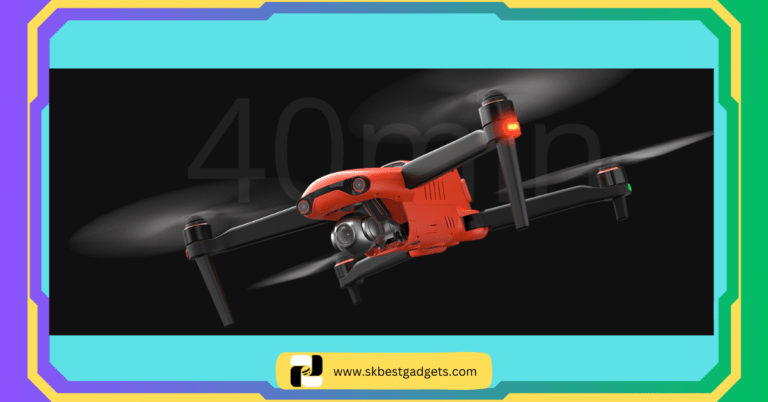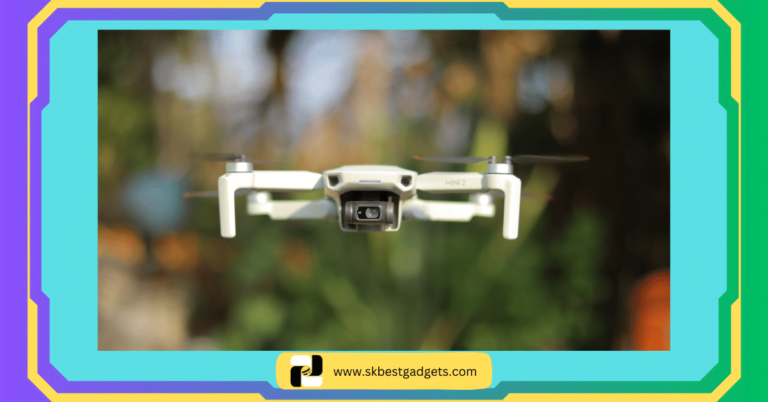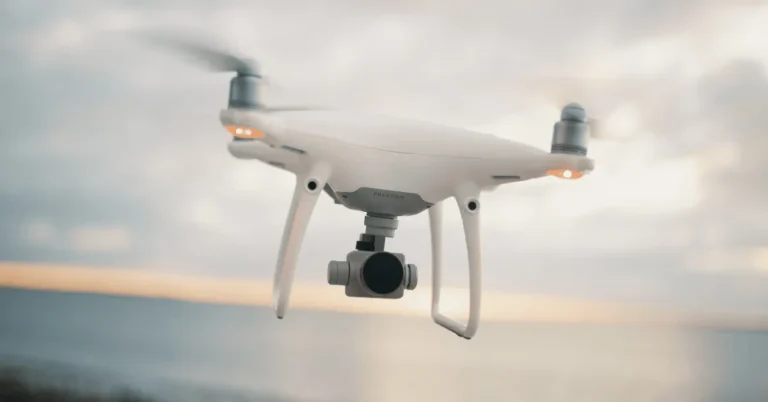Is the US Lagging Behind the World in Army Drones Technology?

Military drone technology has undergone significant transformations since its inception, playing an increasingly vital role in modern warfare.
The United States has been a pioneer in this field, with its early forays into drone technology dating back to the Vietnam War era.
During this period, drones were primarily used for reconnaissance missions, providing valuable intelligence without risking human lives.
These rudimentary systems laid the groundwork for the sophisticated unmanned aerial vehicles (UAVs) we see today.
One of the first notable drones deployed by the US was the AQM-34 Ryan Firebee, which saw extensive use during the Vietnam War.
This early model marked a significant step forward in military reconnaissance, allowing for real-time surveillance and data collection.
The success of the Firebee underscored the potential of drone technology, prompting further investments and research in this area.
As technology advanced, so did the capabilities of military drones. The 1990s saw the introduction of the MQ-1 Predator, a game-changer in the realm of UAVs.
Unlike its predecessors, the Predator was equipped with advanced sensors and weaponry, enabling it to perform both reconnaissance and combat missions.
This dual functionality highlighted the expanding role of drones in military operations, transitioning from mere observers to active participants on the battlefield.
While the US has been at the forefront of drone technology, other nations have also made significant strides.
Countries such as Israel, China, and Russia have developed their own sophisticated UAV systems, each with unique capabilities and applications.
Israel, for instance, has been a leader in the development of small, tactical drones, while China has focused on creating long-range, high-endurance systems.
These global advancements have intensified the competitive landscape, prompting questions about whether the US is maintaining its technological edge in this critical area.
This historical overview sets the stage for a deeper comparative analysis of the current state of military drone technology, examining whether the US is indeed lagging behind or if it continues to lead in this ever-evolving field.
Wondering if there are legal ways to keep drones away from your house? Check out our guide on Effective Legal Ways to Prevent Drones from Flying Around Your House.
Current State of US Army Drone Technology
The United States Army has significantly advanced in the realm of drone technology, deploying a diverse array of unmanned aerial vehicles (UAVs) to enhance its operational capabilities.
Among the most prominent models are the MQ-9 Reaper and the RQ-4 Global Hawk, both of which demonstrate the high level of sophistication and utility that US military drones possess.
The MQ-9 Reaper, a hunter-killer drone, is renowned for its versatility in both reconnaissance and combat roles.
It is equipped with advanced surveillance systems and can carry precision-guided munitions, making it an invaluable asset in both intelligence gathering and target elimination.
The Reaper has been extensively deployed in various conflicts, showcasing its effectiveness in counterterrorism operations and battlefield support.
On the other hand, the RQ-4 Global Hawk is primarily a high-altitude, long-endurance surveillance drone.
Its advanced radar and sensor suite allow it to conduct extensive reconnaissance missions over vast areas, providing critical intelligence and situational awareness to ground commanders.
The Global Hawk’s ability to stay airborne for extended periods also ensures continuous monitoring of key regions, which is vital for strategic decision-making.
Technological advancements in these drones include improvements in autonomous operation, enhanced sensor capabilities, and increased endurance and payload capacity.
The US military continues to invest heavily in drone technology, recognizing its strategic importance.
Current projects focus on integrating artificial intelligence to improve autonomous functions, developing swarming capabilities for coordinated drone operations, and enhancing electronic warfare systems to counter adversarial threats.
Future plans for US Army drones involve expanding the fleet with next-generation UAVs that offer greater stealth, longer range, and more advanced sensors.
This ongoing investment underscores the commitment to maintaining technological superiority and ensuring that US military drones remain at the forefront of innovation.
Choosing the perfect drone motor and propeller combo can be tricky, but fret no more! Dive deeper into our guide on What Factors Are Considered When Choosing a Drone Motor and Propeller Test Kit? for all the key considerations.
Global Comparison: How Other Countries are Advancing
In the realm of military drone technology, the United States is often perceived as a leader. However, a closer look reveals that several other nations are making significant strides in this domain.
Countries like China, Russia, and Israel have developed cutting-edge drone technologies, boasting advanced features and operational capabilities that challenge the US’s dominance.
China, for instance, has rapidly enhanced its drone technology over the past decade. The Wing Loong and CH-4 drones are examples of China’s impressive advancements.
These UAVs (Unmanned Aerial Vehicles) are equipped with sophisticated surveillance systems and can carry various payloads, making them versatile in combat scenarios.
China’s robust production capabilities have enabled it to deploy these drones extensively, both domestically and internationally, often at a lower cost than their US counterparts.
Russia, on the other hand, has focused on developing drones that complement its existing military strategies. The Orlan-10 and Altius-U drones are pivotal in Russia’s reconnaissance and electronic warfare operations.
The Orlan-10, in particular, has been instrumental in providing real-time intelligence and has seen wide usage in conflict zones like Syria and Ukraine.
Russia’s emphasis on integrating drones into its broader military framework highlights its strategic approach to leveraging UAV technology.
Israel is another key player in the global drone landscape, renowned for its innovation and high-quality UAVs. The Heron TP and the Hermes 900 are among the most notable Israeli drones, widely recognized for their endurance and advanced avionics.
Israel’s expertise in drone technology has not only fortified its national defense but also positioned it as a leading exporter of UAVs, fostering international collaborations and partnerships.
These developments underscore a competitive and collaborative international environment in military drone technology.
Countries are not only pushing the boundaries of innovation but also engaging in strategic alliances to enhance their capabilities.
This global comparison reveals that while the US remains a significant force, it must continuously evolve to maintain its edge in the ever-advancing field of drone technology.
This article explores the question: What Type of RDR is Going to be Equipped on a Drone?
Challenges and Future Prospects for the US
The United States has long been a leader in military drone technology, but it now faces several significant challenges that could impede its ability to maintain this leadership.
One of the primary obstacles is budget constraints. The development and deployment of advanced drone technology require substantial financial investment, and balancing this with other defense priorities is a complex task.
Budgetary limitations can slow down innovation and delay the integration of new technologies into operational systems, thereby affecting military readiness and national security.
Another considerable challenge is the regulatory landscape. The US has stringent regulations governing the development and use of military drones.
These regulations, while essential for safety and ethical considerations, can sometimes hinder rapid technological advancements.
The pace of innovation in drone technology is swift, and the regulatory framework must evolve in tandem to avoid stifling progress.
Technological innovation itself presents a double-edged sword. While rapid advancements provide opportunities for developing cutting-edge capabilities, they also pose the risk of obsolescence.
The US must continuously invest in research and development to stay ahead of emerging technologies such as artificial intelligence (AI) and swarm drones.
AI can enhance the autonomy and decision-making capabilities of drones, while swarm technology allows for the coordination of multiple drones to perform complex tasks more efficiently.
The strategic implications of these challenges are profound. Failure to address budgetary and regulatory issues, or to keep pace with technological innovation, could result in the US losing its strategic advantage in military drone capabilities.
This, in turn, poses risks to national security and military preparedness, as adversaries could potentially surpass US capabilities.
Looking ahead, the future prospects for US military drones are promising, provided these challenges are addressed effectively.
By leveraging emerging technologies such as AI and swarm drones, the US can enhance the operational capabilities of its drone fleet.
Investment in innovation, along with a flexible regulatory framework, will be crucial for maintaining leadership in this critical area of defense technology.







